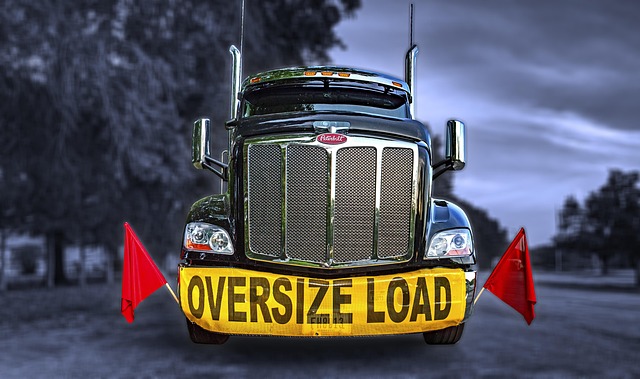Looking to register your car in California? This guide breaks down the process step-by-step, ensuring a smooth transition. From understanding key requirements to gathering essential documents, you’ll learn what’s needed for a successful registration. A crucial part of the process is the DMV VIN verification, which ensures vehicle authenticity. Follow these steps, and you’ll be on your way to becoming a California licensed driver in no time.
- Understand California Car Registration Requirements
- Gather Necessary Documents for Registration
- Perform DMV Vehicle Identification Number (VIN) Verification
- Visit Your Local California Department of Motor Vehicles (DMV) Office
- Complete and Submit the Registration Application Form
Understand California Car Registration Requirements

Before registering your car in California, it’s crucial to understand the state’s specific requirements. The California Department of Motor Vehicles (DMV) mandates several steps for car registration, including a thorough inspection of your vehicle’s Vehicle Identification Number (VIN). This process, often referred to as VIN verification, ensures that all vehicles on California roads meet safety and emission standards.
During this verification, the DMV will cross-reference your car’s VIN with their records to confirm its authenticity and ensure it hasn’t been reported stolen. Additionally, a mobile vin verifier can facilitate this inspection by providing a convenient, on-site service. This technology allows for faster processing and is particularly useful for those who prefer a more efficient registration experience.
Gather Necessary Documents for Registration

Before you begin the registration process, ensure you have all the required documents ready. The California Department of Motor Vehicles (DMV) will need several key pieces of information and evidence to verify your vehicle’s details and your identity. One crucial document is the Vehicle Identification Number (VIN) verification report. This can be obtained through a mobile VIN inspection or by visiting a DMV office for a physical inspection.
Additionally, you’ll require proof of ownership, typically from a bill of sale or previous registration records, along with valid identification such as a driver’s license or state-issued ID. If your vehicle is new and still under manufacturer’s warranty, you might need additional paperwork from the dealer or manufacturer. Gather these documents to streamline the car registration process in California efficiently.
Perform DMV Vehicle Identification Number (VIN) Verification

After gathering all the necessary documents, it’s crucial to perform a DMV Vehicle Identification Number (VIN) verification as part of the registration process in California. This step ensures that your vehicle matches the details on record with the Department of Motor Vehicles (DMV). A mobile vin verifier or even a simple mobile vin inspection can help you confirm this critical information. By cross-referencing the VIN with official databases, you can easily verify the vehicle’s history, including any previous owners, accidents, or outstanding issues that could affect registration.
This verification is a game-changer in ensuring a smooth registration process and preventing potential problems down the road. It’s a straightforward step but one that’s often overlooked—don’t let it catch up with you! Make sure to have your vehicle’s VIN readily available when heading to the DMV, as this will expedite the entire registration experience.
Visit Your Local California Department of Motor Vehicles (DMV) Office

Before you begin the registration process, it’s crucial to visit your local California Department of Motor Vehicles (DMV) office. This is where you’ll initiate several essential steps, including a dmv vin verification. The DMV will ensure that your vehicle meets all safety and emission standards before issuing a registration certificate.
Bring along important documents like the title, proof of insurance, and identification to streamline the process. You may also opt for a mobile vin inspection or mobile vin verification if preferred, allowing you to complete these requirements conveniently at your chosen location. This service is particularly beneficial for those with busy schedules or individuals who prefer not to visit a physical DMV office.
Complete and Submit the Registration Application Form

To begin the registration process for your car in California, you’ll need to complete and submit the Registration Application Form. This form is readily available from the California Department of Motor Vehicles (DMV) website or at any local DMV office. Ensure that all required information is accurately filled out, including your personal details, vehicle specifications, and the Vehicle Identification Number (VIN). The VIN is a unique code that identifies your car, and it’s crucial for accurate and secure registration.
One efficient way to obtain the VIN verification is through a mobile vin inspection service. These services allow you to have a professional perform the necessary checks remotely, which can save time and effort. A mobile vin verifier can cross-reference your VIN with national databases to ensure its authenticity and history, providing peace of mind during the registration process.
Registering a car in California involves understanding specific requirements, gathering essential documents, and completing a straightforward application process. After ensuring your vehicle meets all criteria, begin by performing a DMV VIN verification to confirm the vehicle’s identity. Once verified, visit your local California DMV office, fill out the registration application form accurately, and submit it along with required documents. This ensures your vehicle is legally registered and ready for California roads.
